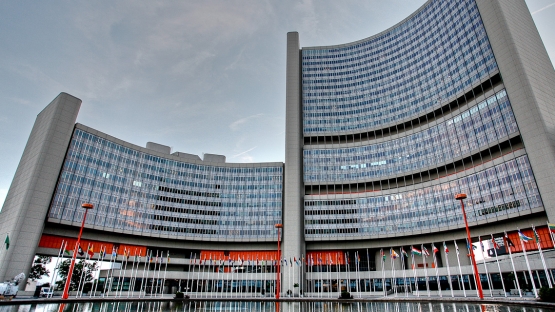The need to improve understanding and reduce uncertainty in phenomenon and models having bearing on safety by better sharing information on vital nuclear research projects was underscored at the IAEA's eighth International Experts Meeting (IEM) in Vienna last week.
Some 150 experts representing 35 Member States of the IAEA and five international organisations gathered at the Agency's headquarters from 16 to 20 February 2015 to discuss Strengthening Research and Development Effectiveness in the Light of the Accident at Fukushima Daiichi Nuclear Power Plant. The IEMs are organised in the framework of the implementation of the IAEA Action Plan on Nuclear Safety. IEMs have been held since 2012 on topics such as radiation protection, decommissioning and remediation, severe accident management, etc.
The latest IEM was convened to discuss new areas and direction of research and development (R&D) work in safety, technology, and engineering following the Fukushima accident, important for Member States considering, constructing or operating nuclear power plants. It was organised in cooperation with the Nuclear Energy Agency of the Organisation for Economic Cooperation and Development (OECD/NEA).
"The main achievement was really recognizing the importance of research and development activities and the contribution they make toward reactor safety and, more importantly, the need to find ways to better share that information among all the Member States," IEM Co-Chairperson Brian Sheron, the Director of the U.S. Nuclear Regulatory Commission's Office of Nuclear Regulatory Research, told a press conference after the meeting.
Experts examined such issues as R&D strategies after the 2011 Fukushima accident in Japan, severe accident analysis, technologies to prevent or mitigate severe accidents, emergency preparedness and response, and post-accident recovery. The IEM was also co-chaired by Bismark Tyobeka, Chief Executive Officer of the National Nuclear Regulator of South Africa.
The meeting provided an opportunity to discuss setting up a platform for a continuous exchange of information on R&D work, Sheron said. Among its main conclusions, he said, was that the IAEA has a key role to play in assisting Member States to prepare their capacity to respond to severe accidents. The IAEA was encouraged to continue providing a forum for discussing R&D related to nuclear safety and was recognised for having a central role in collecting and disseminating R&D information related to Fukushima Daiichi to Member States.
Experts around the world are currently engaged in research areas including nuclear fuel, containment, venting, the interaction of molten fuel and concrete, and metals behaviour, said Pal Vincze, Acting Director of the IAEA Division of Nuclear Power. While it may take years to reap the results of such work, it will eventually "have an impact on nuclear safety."
Experts at last week's IEM agreed that the Fukushima accident will stimulate the international community to oversee long-term R&D programmes in a bid to learn more about severe accidents and associated decommissioning work. "We need to work even more together to improve the effectiveness of the research and to seek more efficient and effective ways of sharing the results with the research community," said Denis Flory, IAEA Deputy Director General, head of the IAEA Department of Nuclear Safety and Security.
A lot of R&D work is aimed at "reducing uncertainties in certain phenomena or models," but until now there hasn't been "an international forum to share data and make sure that all Member States of the IAEA are aware of what other countries are doing," Sheron said. Filling that gap "was one the objectives of this conference."
Highlighting the IAEA's role in helping to achieve that aim, the IEM stressed the need for the Agency to continue to ensure effective dissemination of research information to enhance nuclear safety worldwide, and to provide a platform for closer cooperation between research organisations, regulators, utilities and other stakeholders to exchange information and best practices.
The IAEA Nuclear Safety Action Plan defines a comprehensive programme of work to strengthen the global nuclear safety framework in light of the Fukushima Daiichi accident, including launching the IEM series. Member States endorsed the Action Plan unanimously at the 55th General Conference in September 2011. One of the Plan's 12 main actions is to effectively utilise the results of R&D and to share them, as appropriate.


